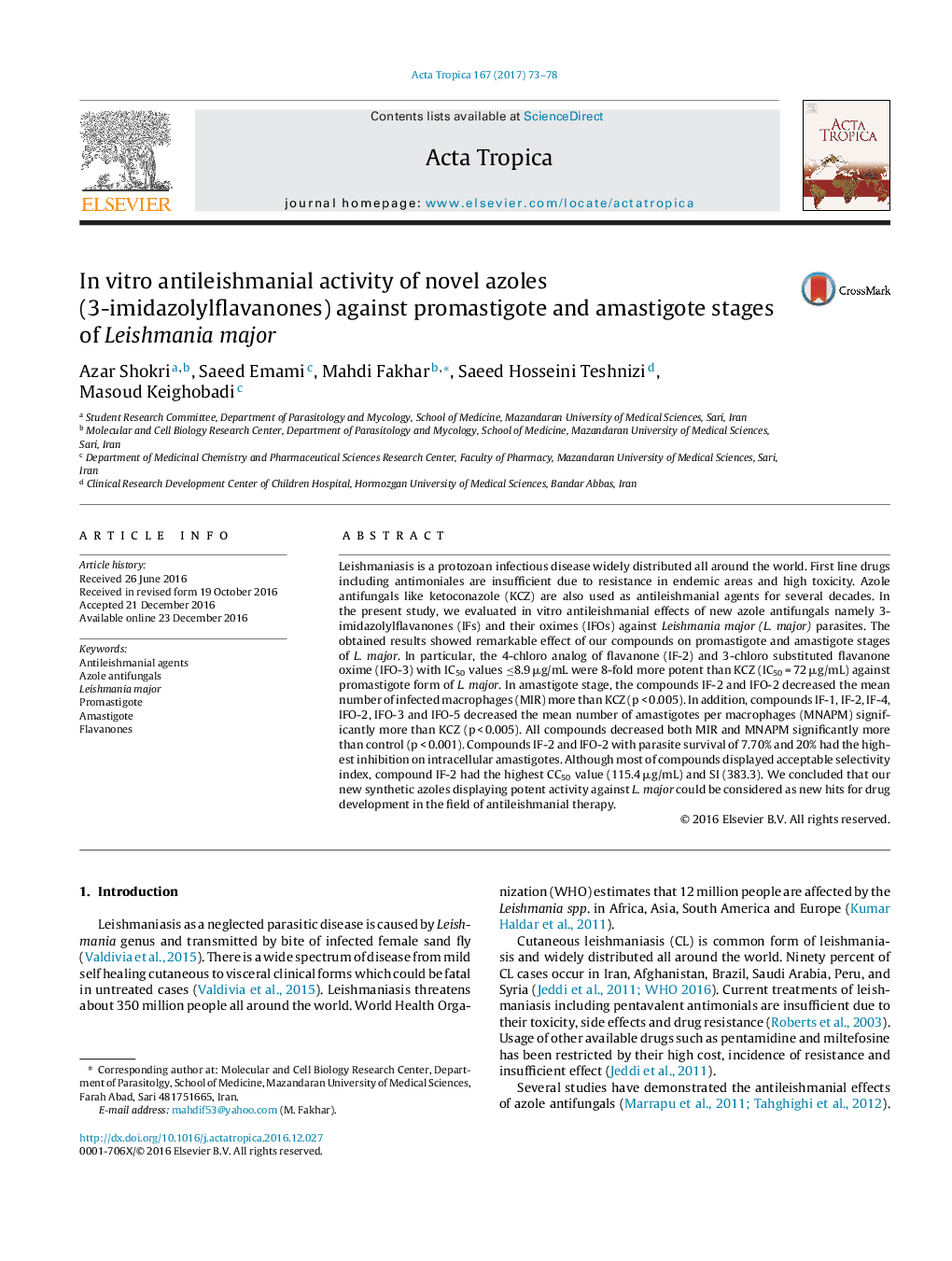| Article ID | Journal | Published Year | Pages | File Type |
|---|---|---|---|---|
| 5670950 | Acta Tropica | 2017 | 6 Pages |
â¢In vitro anti-leishmanial activity of new synthesized azoles on promastigote and amastigotes of Leishmania major was evaluated.â¢In vitro cytotoxicity of new synthesized azoles on J774 A.1 macrophage cells was evaluated.â¢Reliable anti-leishmanial activity in decreasing both infected macrophages percentage and amastigotes was achieved.â¢Prototype compound IF-2 showed better profile of activity respect to the standard azole ketoconazole.
Leishmaniasis is a protozoan infectious disease widely distributed all around the world. First line drugs including antimoniales are insufficient due to resistance in endemic areas and high toxicity. Azole antifungals like ketoconazole (KCZ) are also used as antileishmanial agents for several decades. In the present study, we evaluated in vitro antileishmanial effects of new azole antifungals namely 3-imidazolylflavanones (IFs) and their oximes (IFOs) against Leishmania major (L. major) parasites. The obtained results showed remarkable effect of our compounds on promastigote and amastigote stages of L. major. In particular, the 4-chloro analog of flavanone (IF-2) and 3-chloro substituted flavanone oxime (IFO-3) with IC50 values â¤8.9 μg/mL were 8-fold more potent than KCZ (IC50 = 72 μg/mL) against promastigote form of L. major. In amastigote stage, the compounds IF-2 and IFO-2 decreased the mean number of infected macrophages (MIR) more than KCZ (p < 0.005). In addition, compounds IF-1, IF-2, IF-4, IFO-2, IFO-3 and IFO-5 decreased the mean number of amastigotes per macrophages (MNAPM) significantly more than KCZ (p < 0.005). All compounds decreased both MIR and MNAPM significantly more than control (p < 0.001). Compounds IF-2 and IFO-2 with parasite survival of 7.70% and 20% had the highest inhibition on intracellular amastigotes. Although most of compounds displayed acceptable selectivity index, compound IF-2 had the highest CC50 value (115.4 μg/mL) and SI (383.3). We concluded that our new synthetic azoles displaying potent activity against L. major could be considered as new hits for drug development in the field of antileishmanial therapy.
Graphical abstractDownload high-res image (146KB)Download full-size image
